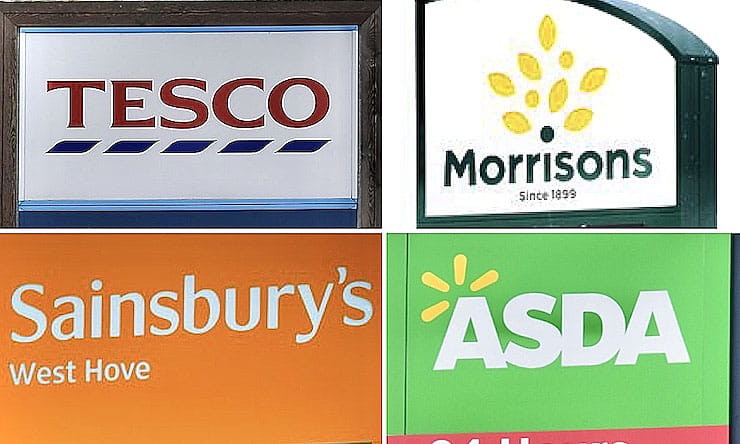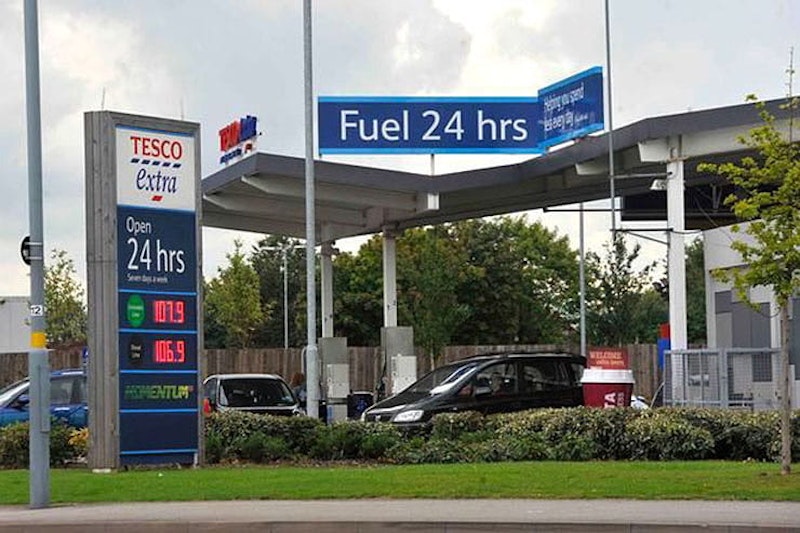The UK’s leading supermarket chains have come in for criticism for not slashing their forecourt petrol prices further, despite already undercutting their mainstream competitors.
Forecourts operated by the ‘big four’ UK chains - Tesco, ASDA, Sainsbury’s and Morrisons - account for around 20% of the UK’s 8,500 petrol stations and are regularly credited with being able to offer cheaper prices than the likes of Shell, BP and Esso.
Made possible by the brands’ relying less heavily on fuel sales since grocery sales dictate turnover and profit margins, it is for this reason that the companies have been criticised for not offering even cheaper fuel by the RAC.
Indeed, while the supermarkets have reacted accordingly with their mainstream competitors - which mark-up more aggressively to counteract the smaller profit margins of each forecourt, the RAC has called on the chains to lead the way in driving costs down further.
The comments have been spurred on by a noticeable reduction in the price of wholesale fuel, which dropped to 111p in November, a saving that isn’t reflected in the current costs being advertised on the forecourt.
According to the RAC, as much as 20p per litre isn’t being passed onto the consumer, a situation labelled ‘bordering on a scandal’ by the breakdown and recovery services giant.
“It’s bordering on a scandal that drivers are being overcharged so much because the big four supermarkets, which dominate UK fuel retailing, are flatly refusing to reduce their prices by bigger amounts,” RAC fuel spokesman Simon Williams said.
“Their prices are dropping like a feather when they should be falling like a stone. In 10 years of closely monitoring fuel prices we have never seen major retailer margins this high for this long. It used to be the case before the pandemic that we’d see wholesale prices drop by 4p a litre and then the supermarkets would be vying with one another to announce a price cut to drive customers into their stores.
“This sadly seems to be a thing of the past as nowadays they appear to be hanging on to massive margins for dear life. This is to the detriment of everyone because, of course, other retailers won’t be encouraged to reduce their prices meaning the UK average stays artificially high.
“We have more sympathy for smaller retailers that don’t buy new stock as often as their larger competitors and need larger margins to stay afloat – to their considerable credit, some have lowered their prices drastically, undercutting the supermarkets by a huge amount. We’ve had reports of independent retailers selling petrol for as little as 140p a litre which is 18p lower than the supermarket average.
“While every retailer is free to charge what they like for their fuel it doesn’t seem fair that some of the biggest retailers appear to be taking advantage of their hard-pressed customers in the run-up to Christmas by making well over 10p more on a litre than they used to. We strongly urge every driver not to automatically assume their local supermarket is the cheapest place to fill up and shop around for the best priced fuel.
“We saw some similar fuel pricing behaviour from the big chains last Christmas but despite this, we believe this is probably the worst example of ‘rocket and feather’ pricing we have ever seen. We hope the Competition and Markets Authority, which is currently investigating UK fuel retailing, is paying close attention.
“We would also remind the supermarkets that the Government’s 5p-a-litre duty cut is still in place and is intended to ease the burden on drivers.”
Why are UK fuel prices so high?
The price for a litre of fuel in the UK has spiralled in 2022, reaching a new record peak in July with a nationwide average of 191.5p being recorded, well up on the 2021 average of 133.3p.
Together with a widespread cost of living crisis spurred on by a rise in heating bills, the spiralling prices have piled more pressure on riders. Indeed, though prices have since come down to an average of 168p in November 2022.
Myriad factors have contributed to the sharp rise, including
The price of crude oil globally
Supply and demand issues for crude oil
Exchange rate (refined fuel sold in $)
Distribution costs
Fluctuating margins added on fuel retailers
Government fuel duty (52.95p per litre)
VAT (20%)
The Russia - Ukraine conflict
How much will it cost to fill up my motorcycle?
While the motorcycle industry has pushed a message of converting to two-wheels from pricier to run cars, the rising prices have also had an impact on those that use their motorcycle regularly.
Share on social media:

